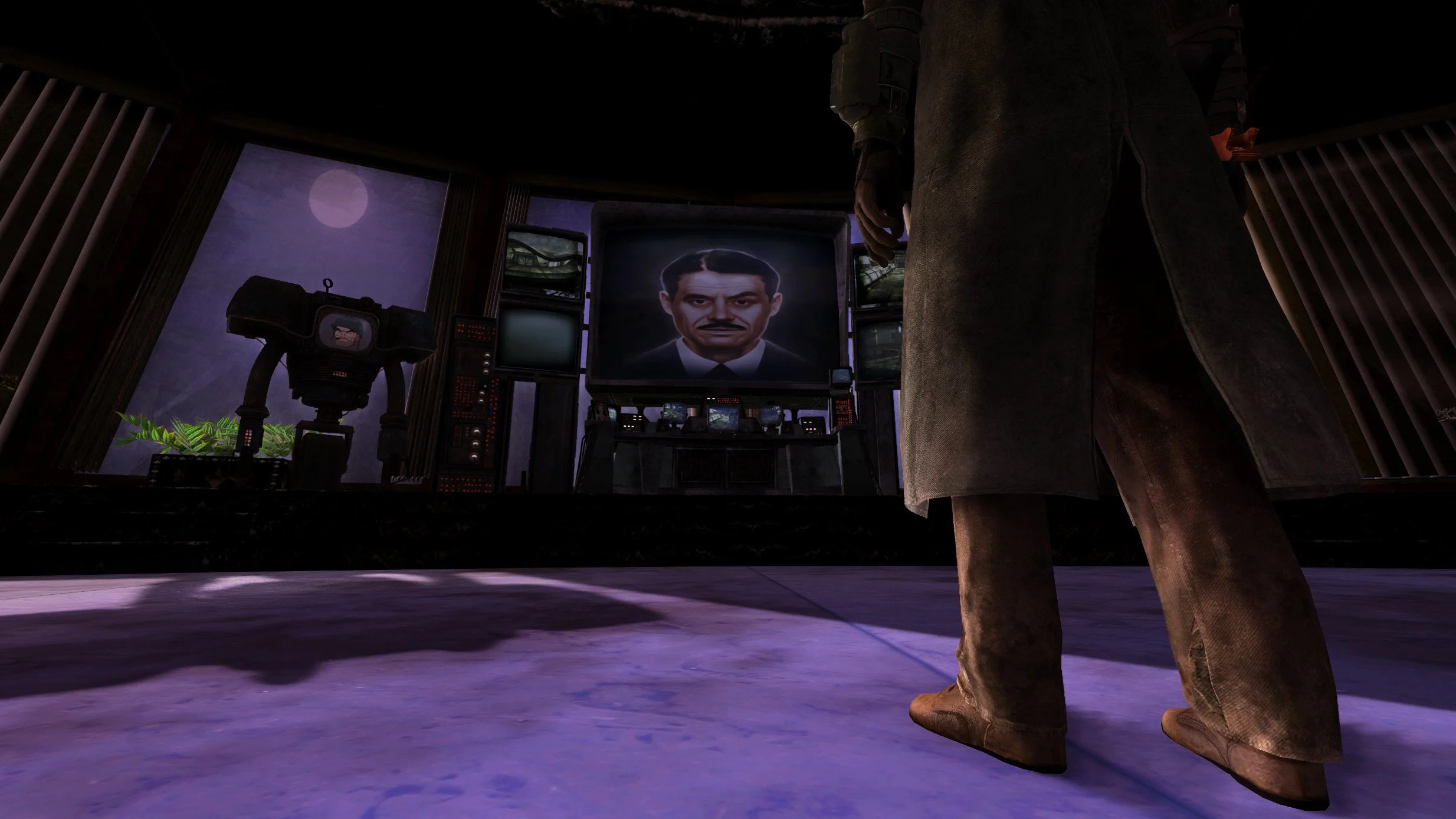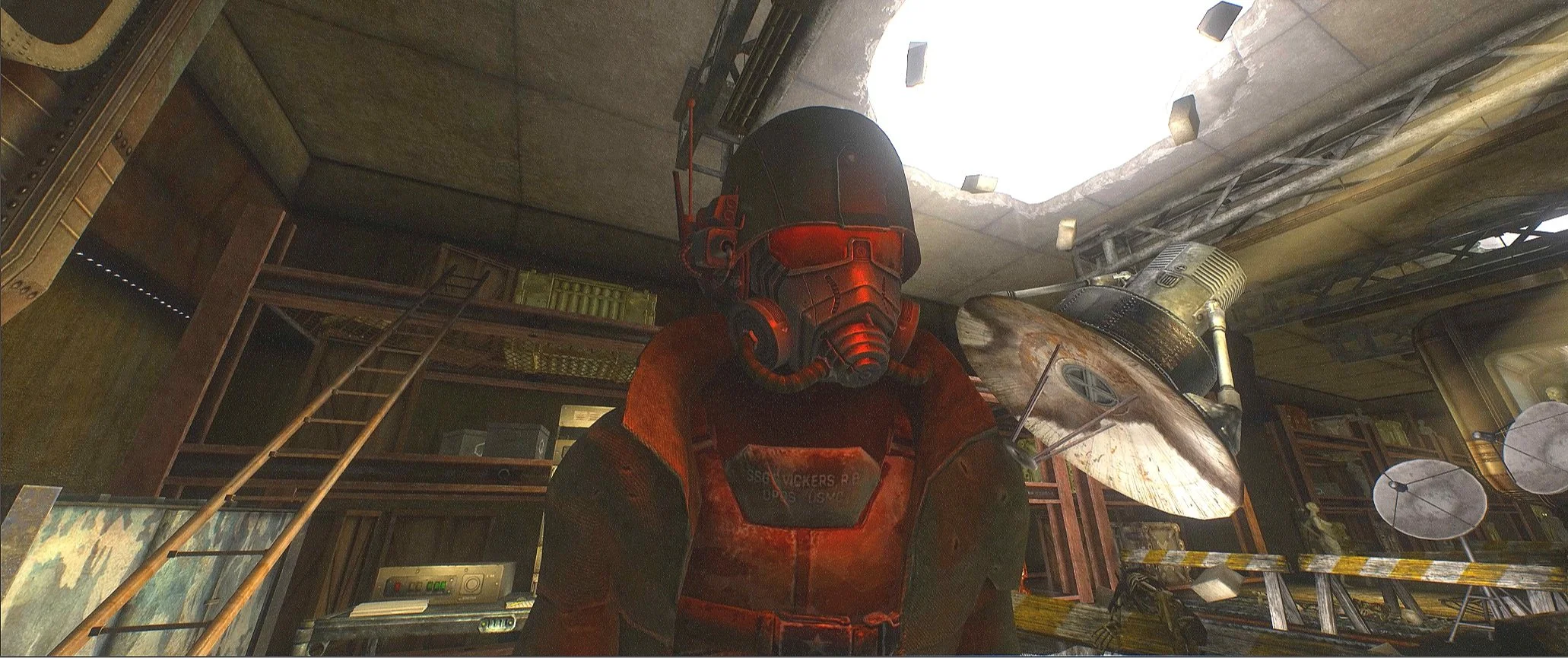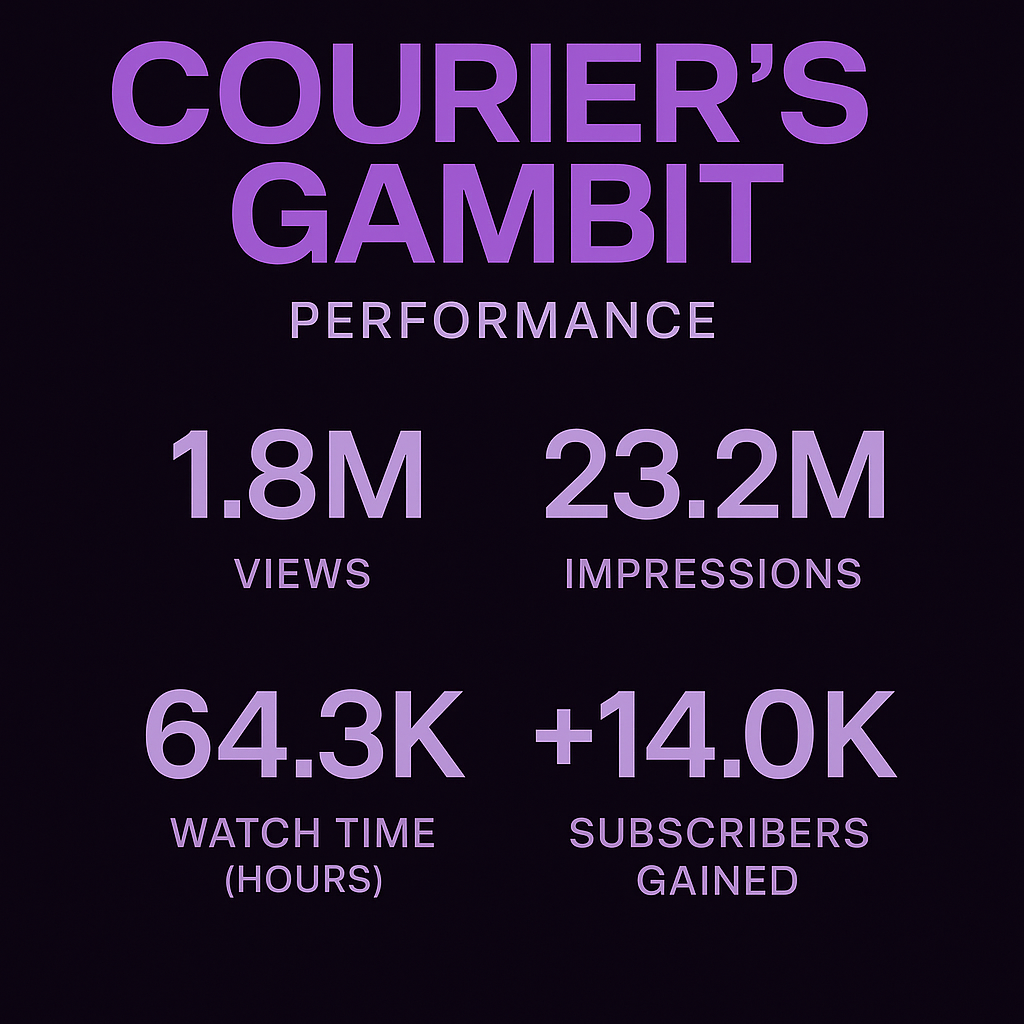Case Study: The Courier’s Gambit
A multiverse machinima that turned an AI gimmick into a serialized YouTube phenomenon.
Overview
Courier’s Gambit is a Fallout: New Vegas machinima series that evolved from a viral AI crossover channel into a serious multiverse drama. Using AI voice synthesis, deep lore rewrites, and time-loop mechanics, the series reimagines the Fallout canon while slowly revealing a hidden continuity behind what first appeared to be random character debates.
The channel originally launched as AI Frye, producing short-form debates between characters from Fallout, Star Wars, Batman, and more. Over time, viewers noticed a pattern: these weren’t just novelty videos—they were fragments of a larger narrative, with a hidden figure manipulating events across franchises.
This slow-burn storytelling twist became the hook. Viewers subscribed not just for philosophical debates between their favorite characters, but to piece together the mystery.
That layered mystery became The Courier’s Gambit — a prequel series tying the multiverse chaos back to a single origin: a cursed timeline, a fractured Mojave, and one Oracle trying to fix it.
The Challenge?
AI voice content on YouTube has a ceiling. It's built for novelty—short bursts of engagement, meme formats, or ironic debates between recognizable characters.
At launch, AI Frye operated within that space. The early success was real, but the limitation was obvious: clickthrough without loyalty. Views didn’t convert. Comments were jokes. Nobody cared who made the video—because nobody expected a story.
Meanwhile, machinima is one of the most unforgiving formats to work in. You’re building entire cinematic scenes in a game engine that wasn’t made for it. Animation is stiff, character blocking is restrictive, and staging nuance is near-impossible without mods or custom rigs. The tools are outdated. The audience’s expectations are not.
That meant I was working against two trends:
AI voice fatigue — Viewers had seen it before, and most of it was junk. The niche was oversaturated with low-effort uploads.
Machinima disinterest — A format long abandoned by the algorithm and seen as relic content outside of nostalgic fanbases.
But I had a bigger problem: I wasn’t just trying to make a video. I was trying to build a narrative platform.
I wanted to create a serialized experience with real lore, real character arcs, and real payoffs. That required:
A production workflow that could scale without burning out
A way to keep viewers hooked through slow-burn reveals
An architecture that turned novelty into myth
The biggest challenge wasn’t building the story—it was making YouTube treat the story like it mattered.
The Solution
To beat the format, I had to build a system that made every constraint part of the design.
To solve the format’s limitations, I grounded the series in a New Game+ narrative structure, built around a character known only as Gambit—a version of the Courier who discovers he’s not the first to try and fix the Mojave. He’s part of a hidden lineage: the Oracles, each reliving the timeline with increasing awareness, each failing to stop something known only as the Anomaly.
Every reset begins the same way: Gambit eliminates his past self in Doc Mitchell’s house, creating a clean save point. From there, he retains knowledge across loops, while the world resets. This allowed me to:
Justify repeated scenes, reused sets, and familiar dialogue
Embed recursive symbolism in visuals and audio
Build character tension through asymmetrical memory (Gambit remembers, others don’t)
From a production standpoint, I aligned story structure with execution systems:
Voice AI workflows enabled a scalable, consistent cast across dozens of roles—each with distinct tonal and emotional profiles. I created a modular system for dialogue generation, processing, and integration that maintained narrative pacing and character clarity across loops, even as timelines and identities fractured.
CLARA and ABEL were voiced using curated models with layered processing to create distinct sonic identities (CLARA = smooth/digital; ABEL = fragmented/glitched).
Temporal loops became a formal storytelling device—anchoring the viewer in repetition while gradually revealing divergence. Key phrases, visual cues, and audio triggers were re-used across episodes to create a sense of ritual. The tone stayed consistent, but the meaning evolved with each reset, mirroring Gambit’s growing awareness and destabilizing trust in the world around him.
As viewers began connecting the dots—comments exploded. Not just with fan reactions, but with investigations. Theories. Scene rewatching. Reinterpretation of old episodes. Engagement both went up, and evolved.
The Results
Courier’s Gambit didn’t just succeed as a machinima series—it redefined what an AI-driven YouTube channel could become.
Without paid promotion, brand deals, or legacy IP access, the series grew entirely through strategic storytelling, visual consistency, and algorithm-savvy deployment.
Narrative Impact
High retention and rewatchability: Recursive loops and hidden lore drove viewers back to earlier episodes to reassess context.
Community engagement leveled up: Comments turned into theorycrafting threads, timeline speculation, and deep-cut Fallout references.
AI voice content earned legitimacy: Viewers praised performances, not just the novelty. The tech stopped being the gimmick and became the medium.
Courier’s Gambit is proof that with the right execution:
AI voices can carry emotional narrative weight
Machinima can still innovate
YouTube is viable as a serialized storytelling platform
The shift from novelty to narrative was intentional. The transition held attention because it was built on structure, consistency, and lore that rewarded repeat viewing.






